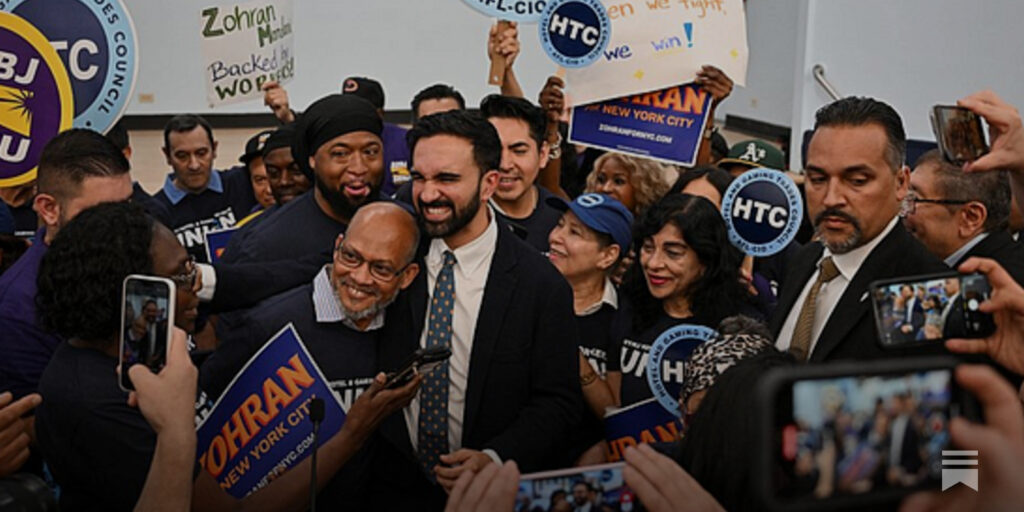Justin Bieber has released one of his most personal albums to date.
Def Jam dropped the 31-year-old singer’s seventh studio album, titled “SWAG,” on Friday. The album addresses various topics, including his recent marriage struggles and his battles with mental health.

The 21-track project features collaborations with artists such as Sexyy Red, Dijon, Lil B, Gunna, Cash Cobain, 2 Chainz, and comedian Druski.
The album comes four years after Bieber’s “Justice,” which dropped in 2021.
The album’s tracklist includes: “All I Can Take,” “Daisies,” “Yukon,” “Go Baby,” “Things You Do,” “Butterflies,” “Way It Is,” “First Place,” “Soulful,” “Walking Away,” “Glory Voice Memo,” “Devotion,” “Dadz Love,” “Therapy Session,” “Sweet Spot,” “Standing on Business,” “405,” “Swag,” “Zuma House,” “Too Long,” and “Forgiveness.”
On one track, titled “Walking Away,” the singer appears to allude to his marriage to the Rhode Skin founder.
“Days go by so fast, don’t want to spend them with you / So tell me why you’re throwing stones at my back / You know I’m defenseless,” Bieber sings in the first verse.
“It is imperative that we refrain from making any unwise remarks. We have been exercising our patience, and I believe it would be prudent to take a temporary break.”
Despite recent rumors of marital difficulties, Bieber’s lyrics unequivocally demonstrate the profound nature of their love.
“My love, I will not abandon you. You were my precious diamond, and I presented you with a ring. I made a promise to you that I would change. These are the challenges of growing up, but my love for you remains steadfast. I will not walk away,” he sings.
Bieber referenced his viral showdown with paparazzi last month, where he yelled at a snapper, “I’m a dad and husband. You don’t understand. I’m focused on my business.”
The heated exchange, titled “Standing on Business,” features comedian Druski.
In April, The Hollywood Reporter reported that Bieber was in Iceland to complete the project. An insider said he visited the Nordic country to “vibe out.”
On Thursday, a black-and-white billboard of Bieber with “SWAG” appeared in Iceland. Bieber shared the tracklist on Instagram.
On his Instagram Story, Bieber shared photos of himself, wife Hailey Bieber, and son Jack.
Justin Bieber shared photos of himself, wife Hailey, and son Jack. The photos included a shirtless Bieber, a close-up of the couple, and a snapshot of Jack on Bieber’s lap.
“If you don’t listen to my album when it drops, we can’t be friends,” the 21-year-old singer wrote. “Sorry, I don’t make the rules.”
Bieber responded, “Love you, bro.”
Bieber released his first album, “My World 2.0,” in 2010. His hit EDM song, “Where Are Ü Now,” dropped in 2015.
Bieber’s track earned him his first Grammy Award for Best Dance Recording.
Two years later, his “Despacito” remix with Luis Fonsi and Daddy Yankee won him a Latin Grammy Award.
Throughout his career, Bieber has won 26 Billboard Music Awards, 18 American Music Awards, and 22 MTV Europe Music Awards.
In 2023, Bieber severed ties with his longtime manager, Scooter Braun, after working together since 2007.
The two recently resolved their outstanding financial disputes, particularly a debt incurred due to the cancellation of Bieber’s Justice tour in 2022. (A representative for Bieber declined to provide further details on the settlement at the time.) Bieber’s failure to fulfill his contractual obligation to AEG (the tour’s promoter) to complete the concert dates, for which he had received a $40 million advance, resulted in a debt exceeding $20 million owed to AEG. Subsequently, then-manager Braun, through his company, assumed the debt through a loan. The two were also partners in various other business ventures, including a record label and film projects.
Braun was also involved in a $200 million catalog deal with Hipgnosis Songs (now Recognition Music) for Bieber’s songwriting interests, potentially representing the largest financial investment in music history for an artist under 30. (It is noteworthy that Hailey Bieber, Justin Bieber’s spouse, recently sold her Rhode Beauty skin care brand to e.l.f. Beauty for $1 billion; Braun served as a seed investor in the venture.)
Braun discovered Bieber’s YouTube videos at age 13 and became his manager.
Puck News reported that the two hadn’t spoken in months, and Bieber was seeking new management to “clean house.”
Representatives for both shut down rumors to Page Six, and neither Bieber nor Braun commented publicly.
In May, a new documentary, “TMZ Investigates: What Happened to Justin Bieber,” shed light on why Bieber sold his music catalog for $200 million in December 2022.
The doc revealed that Bieber faced financial troubles, including debt due to pulling out of his “Justice” World Tour in 2022.
TMZ executive producer Harvey Levin claimed that Bieber sold his catalog because he was broke.
Despite reports of Bieber earning between $500 million and $1 billion throughout his career, Levin alleged in the doc that Bieber was on the verge of financial collapse in 2022 and had to sell his catalog.
Levin claimed Braun informed Bieber of the sale and urged him to wait until January 2023 to claim a tax break.
“Justin said, ‘I must sell it now,’” Levin alleged. “He sold it in December, leaving him broke.”
In May, a PWC audit revealed Bieber owed Braun over $8.8 million.
Bieber owed Braun money after Braun covered Bieber’s “Justice” tour debt. Bieber had previously accepted a $40 million advance from AEG.
The company then asked Bieber to pay them back $26 million of the money he already borrowed.
Braun stepped in and paid the money through his Hybe company.
On Thursday, Bieber settled his debt with Braun.
According to TMZ, Bieber was asked to pay back the $26 million. Braun will also get half of the $11 million that he said Bieber owed for unpaid commissions.
Also, rumors have been flying around for the past year that Bieber and Hailey were having problems in their marriage.
Bieber and Hailey exchanged vows in a New York City courthouse in September 2018. Their joyous news of expecting their first child together was shared when they renewed their vows in Hawaii in May 2024.
Their son, Jack Blues, was born in August of that year.
Speculation began circulating after months of cryptic social media posts and bizarre rants from Bieber.
After a four-year hiatus, Justin Bieber releases his highly anticipated album, coinciding with significant personal transformations in his life. Notably, he welcomed a child with his wife, Hailey Bieber, last year. On the musical front, Bieber parted ways with his longtime manager, Scooter Braun, in 2023. Moreover, Braun recently announced his resignation as CEO of Hybe America earlier this month.
Braun and Bieber have collaborated since Bieber’s career took off in 2007.
Getty Images for YouTube Originals
On his first Father’s Day, Bieber shared nearly 20 posts, including one with a photo of him and the middle finger emoji, declaring, “I’m a dad that’s not to be messed with.”
Another photo showed his Audemars Piguet watch, with the caption, “Happy daddy day to me u lil ho.”
Hailey focused on her career, gracing Vogue’s summer cover and selling her beauty brand, Rhode, for $1 billion in May.
Sources said it was challenging for her to celebrate due to personal issues.
Bieber’s new album comes four years after “Justice,” released in 2021.
“Family issues have affected her success,” an insider said, while a second source explained, “Justin is struggling, and Hailey is giving him space to recover. He’s doing his best, but it’s tough.”
They noted, “Justin’s been difficult lately due to his struggles. Hailey is the stable parent keeping their family together. It’s been hard on her.”
In their Vogue interview, they praised each other.
“I’ve done a lot of dumb things in my life, but the smartest thing I’ve ever done was marry Hailey,” Bieber said.
“She’s in the spotlight for her effortless style, business, art, and fashion,” he gushed. “And how she makes motherhood and wifehood look easy.”
Hailey explained how her husband helped her ignore headlines and rumors.
“Justin’s been doing this since childhood and has faced the most scrutiny. He said, ‘Trust me, I’ve been here many times. You won’t win.’”



















